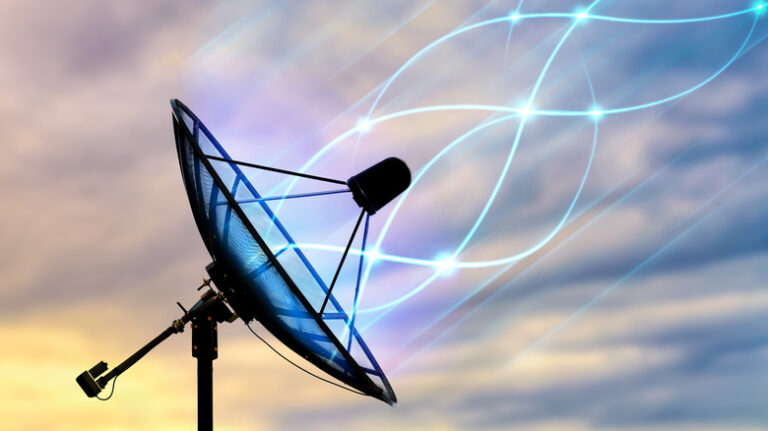How To Use This Giant Laser To Look For Alien Evidence
Robots exploring the enormous sandbox we call Mars are just one part of the quest for alien life. In reality, researchers searching for extraterrestrial intelligence (SETI) have been utilizing a variety of radio telescopes for years to seek for alien-originating signals. They haven’t found anything concrete yet, but sometimes they come across something that makes them go, “Wow!” Scientists may now have a new listening device in the form of gravity itself, according to recent study posted on the arXiv preprint website.

The Allen Telescope Array on Earth and the James Webb Space Telescope in space have both been employed to search for evidence of extraterrestrial life. They all make their observations using the electromagnet (EM) spectrum, which is a fancy way of stating that they look at light waves, despite the fact that these high-tech equipment differ in some rather major ways. The visible light waves that can be seen by human eyes are only one form of light wave that is included in the electromagnetic spectrum. Other low-frequency waves like radio waves and infrared light as well as high-frequency waves are also included (ultraviolet light, X-rays).
Like ripples in a pond, extraordinarily enormous entities like neutron stars and black holes create waves as they travel across space. The fact that these special waves, fittingly dubbed gravitational waves, are different from the electromagnetic spectrum and cannot be detected by conventional telescopes is crucial. Fortunately, we are capable of creating gravitational wave detectors, and several are even in use.
Bigger is better

Two gravitational wave detectors, one in Louisiana and one in Washington, make up the LIGO observatory. Each detector comprises a L shape, with each arm being a 2.5-mile-long tunnel. Each tunnel is traversed by a single laser beam that has been divided. Each tunnel’s end has a mirror, which reflects the laser and reflects it back. Normally, the detector would receive a reply from both beams at the same time. However, if a gravitational wave passes through the detector while it is on, the beams’ course will be altered. These aberrations help scientists understand far-off objects.
Other gravitational wave detectors exist, such as KAGRA in Japan and Virgo in Europe. Unfortunately, none are developed enough to hunt for extraterrestrial life. The 2030s-slated space-based LISA observatory is a joint effort between NASA and the ESA. Unlike the 1,850 or so miles between the two LIGO detectors, LISA will consist of an array of three spacecraft spaced apart by millions of miles, according to NASA. To find spacetime distortions brought on by gravitational waves, the LISA spacecraft will trade laser beams with one another. Even so, it won’t be sufficient to complete the task.
Even more sophisticated detectors will be developed in the future if the LISA mission is successful. One of the ideas is the Big Bang Observer (BBO), and Japan is developing a similar-sized antenna called DECIGO. These observatories would have arms that were hundreds or perhaps thousands of times longer than LIGO, despite its amazing size.
What’s the payoff?

The payback better be quite amazing if the required detectors are two generations away, as well as probably several decades and billions of dollars. So what precisely can we anticipate that they will find? These observatories might be ideally adapted for spotting enormous extraterrestrial engineering projects, known as megastructures, according to the paper’s authors.
They propose that we might search for extraterrestrial structures with a mass roughly equivalent to Jupiter and moving at a speed of 10% of light. Even though Jupiter is rather large, it is orders of magnitude smaller than the objects that are currently being seen utilizing gravitational waves. And while 10% the speed of light, or around 67 million miles per hour, is unfathomably fast, it is still much below the cutting edge of science fiction technology. In order to observe these kinds of things, we would need to go as far as the Andromeda galaxy, which is fairly far away in any case. Within 10 parsecs, a region containing more than 400 stars, smaller structures, roughly the size of Mercury, may be seen (via Sol Station).
According to the article, if aliens are flying about in enormous, extremely fast spacecraft, humans might be able to not only spot them but also perhaps reverse engineer the technology. Of course, this all presumes the existence of aliens to detect in the first place, which is by no means a given. The greatest area to look for signs of life may be closer to home until these observatories are fully operating.
Do not forget to share your opinion with us to provide you with the best posts !




0 Comments